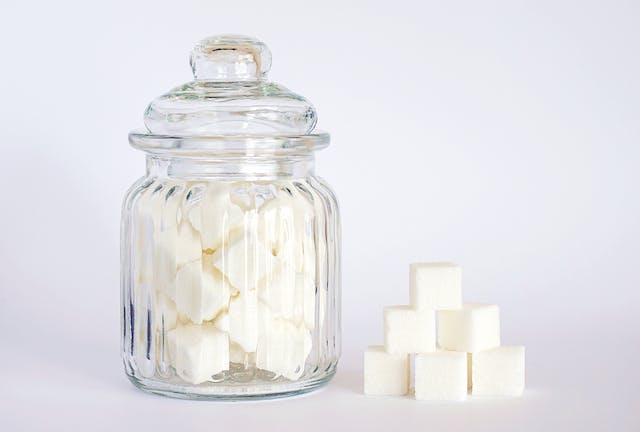
Why is artificial sugar sweet? Because they have molecules that fit into the sweetness receptors in our taste buds.
We have about 8000 taste buds on our tongues, although we cannot see them. The tongue is covered in tiny lumps called papillae. The taste buds are inside these papillae. Taste buds are made up of three different kinds of cells. These are taste receptor cells, basal cells, and supporting cells. There are 50 to 150 taste receptor cells that are bunched together. The basal cells are stem cells that will replace the receptor cells. The receptor cells are replaced about every ten days. The supporting cells are just to support the structure of the taste bud and don’t have any other function.
So, how do we taste? The receptor cells are bunched together in the papillae and they have microscopic hairs attached to them called microvilli that stick up out of the papillae. When we eat something, we chew it up and mix it with saliva to break down the items. This releases chemicals and the molecules of those chemicals stick to these tiny hairs. The receptor cells have proteins on their surface and when they come into contact with the chemicals, the proteins are changed. This change induces the receptor cell to send an electrical signal to nerves, which are transmitted to the brain.
There are five basic tastes that we can detect on our tongue. These are sweet, salty, sour, bitter, and umami (savory). Most of us learned at school that different parts of the tongue taste different flavors, but that is not actually true. Most of the taste buds we have react to all of the flavors, but some are more sensitive to one flavor than others. Each of the five flavors has a different property that the taste bud receptor cells are reacting to. With sweet foods, the fructose or lactose trigger the taste bud. With sour foods, the reaction is caused by hydrogen ions. With salty food, it is caused by the sodium and chloride. With bitter food, it is caused by many different substances. The taste buds recognize 35 different types of bitter tastes. And the umami taste is triggered glutamic acid or aspartic acid.
All natural foods that we eat contain sugars. The most common forms of sugar are sucrose, glucose, lactose, and fructose. When we eat sweet food, those sugars in the food connect to the sweet receptor in the receptor cells of the taste buds, sending a sweet signal to our brain. The brain then has a dopamine response to tell you to eat more of that sweet food. The brain wants to eat a lot of sweet food because it is usually energy rich and a very good source of fuel for the body. After we have tasted the sugar, we swallow it and it is broken down into its components in our intestines by various enzymes.
There are many artificial sugars on the market right now. How can they be sweet, but not contain the sugars and the energy that real sugar contains? Artificial sugars contain molecules that are almost exactly the same size and shape as the real sugar molecules. When you put them in your mouth, they are able to attach to the sweet receptors in the taste buds that are there to taste sugar. However, unlike real sugar, once you eat these artificial sugars, your body is unable to digest them, and they pass straight through you. That is how you can have the sweet taste of sugar without any of the energy or the calories.
There are many different types of artificial sugar and some of them are very very sweet. An artificial sugar called Advantame is 20,000 times sweeter than regular sugar. The first artificial sugar discovered was saccharin. It was named after the Latin word for sugar. In 1897, a researcher at Johns Hopkins University was trying to find a new use for coal tar. He went home after work and everything he ate for dinner tasted incredibly sweet. He realized he still had some of the compound he had been working with on his fingers and that was where the sweet taste was coming from. It turned out to be benzoic sulfimide, which is 300 times sweeter than sugar.
There is a lot of ongoing research into whether these chemicals are good or bad for you. You can get the same sweet taste without the calories, but we are putting things in our mouths that are not technically food. And this is what I learned today.
Photo by Suzy Hazelwood: https://www.pexels.com/photo/close-up-photo-of-sugar-cubes-in-glass-jar-2523650/
Sources
https://my.clevelandclinic.org/health/body/24684-taste-buds
https://www.healthline.com/nutrition/artificial-sweeteners-good-or-bad#types
https://en.wikipedia.org/wiki/Sustentacular_cell
https://www.science.org.au/curious/people-medicine/how-do-our-tastebuds-work
https://www.sciencelearn.org.nz/videos/1810-taste-bud-in-action
https://www.ncbi.nlm.nih.gov/books/NBK279408/
https://www.npr.org/2011/03/11/134459338/Getting-a-Sense-of-How-We-Taste-Sweetness
